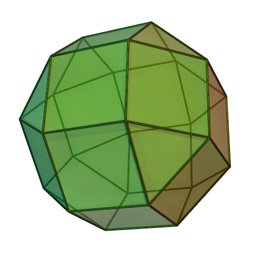Does anyone know of any good resources for the proof of the number of Archimedean solids (also known as semiregular polyhedra)?
I have seen a couple of algebraic discussions but no true proof. Also, I am looking more at trying to prove it topologically, but for now, any resource will help.*
*I worked on this project a bit as an undergraduate and am just now getting back into it.

